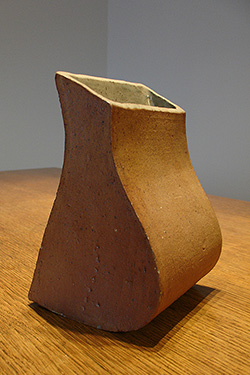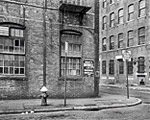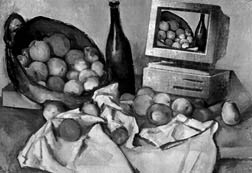PHOTOGRAPHS BY JAY BOERSMA
As I started editing the photographs to put on this site, I was a little surprised to realize that they span a period of around fifty years and this realization made me think that maybe I should write something about them—and about me.
I fully understand that, on the Internet, expecting visitors to read a handful of paragraphs like this is equivalent to asking them to read War and Peace so, although I'd like you to read this, you may decide not to and that's fine.

Pottery
Let it suffice that at some point in my mid-twenties I decided to make art. At the beginning, I didn't really think of it as a career choice as much as something I could devote time to that might have some lasting meaning for me.
I began taking studio art courses and eventually concentrated on photography. I gravitated towards photography because of a sincere love of looking at and making photographs and also because it was a discipline that I could contextualize as somehow "practical." (This was obviously ridiculous. It was The Sixties and it seemed that the entire population of North America was tuning in, turning on, and taking photography classes.)
I spent the last two years of my undergrad education at Columbia College Chicago—at that time, an unruly, unaccredited, and very exciting alternative to traditional university study. Columbia College allowed students to become totally immersed in their disciplines at the undergraduate level and that's what I did with photography. In my senior year (and in the nick of time) Columbia became accredited and, based on my work there, I was accepted into the MFA program at the Rhode Island School of Design.
At Columbia, I studied photography with Charlie Traub, James Newberry, and David Avison; printmaking with Phyllis Bramson, ceramics with Bruce Jacobson, and creative writing with Larry Heinemann. RISD gave me the opportunity to study in depth with Aaron Siskind and Harry Callahan and to do additional coursework with Minor White, Lisette Model, and other photographic luminaries.
Some of these teachers, like Callahan, Traub, and Avison, influenced me tremendously. I was simply happy to have had the opportunity to experience and learn from the others.
After finishing my formal education (along with all of those other baby boomers), I began applying for teaching jobs. The irony of obtaining an MFA is that it prepares students professionally—but only to teach others so they can then teach others to teach others, and so on.
My post-college career trajectory was both eclectic and erratic and required a mix of determination and stubbornness: a job doing photography for a printed circuit manufacturer (I paid RISD tuition for this?), a position as "university photographer" shooting basketball games and groundbreakings, a one-year sabbatical replacement position in Peoria, Illinois, a two-year "visiting" professor position in Champaign-Urbana, a period of unemployment coincident with a new baby, and eventually, a tenure-track position at Governors State University on the outskirts of Chicago.
During these years, I produced and exhibited a great deal of photography, much of which I am editing, scanning and installing on this website. In one of my classes at RISD, Harry Callahan, obviously disappointed at the small number of photographs we students had brought to class that week, said to us, "Do you think, because we call ourselves artists, we don't have to work for a living?" and it was during this time that I truly learned what that meant.
Eventually the persistence and effort resulted in a substantial exhibition list and the acquisition of my work by a number of collectors and institutions including the Art Institute of Chicago.
I spent a total of fifteen years at Governors State University, teaching many students, learning from several, and gradually seeing that what I had thought would be a short stay was becoming a long, tenured, one.
Sometime around 1992, I began using the Internet. This was before the .com domain existed or the World Wide Web was in widespread use. One of my earliest Internet projects was teaching what I believe was the very first online art course, The Gallery Electric. It used e-mail, a listserv list and Internet Relay Chat to discuss the art exhibited at numerous Chicago-area galleries and museums.
In 1994, I downloaded a copy of the Mosaic web browser from a University of Illinois FTP site, viewed my first web page, and literally thought, "This is going to change everything." In 1996, I left teaching and became the Senior Creative Director of a large entertainment and publishing firm, where I remained for another fifteen years.
Re-Vision.com began as a personal testing area for my web design (hard to believe, but there were no courses or books on how to design for the Web at that time) and a way for me to distribute several collections of graphics and sounds I had produced. Although those parts are still here, I have shifted the site's focus entirely to photography.
Over the past several years, I have put several collections of my photographic work here. This includes photographs done nearly fifty years ago, others done done within the past few months, and a large number produced in the decades between.
After fifty-plus years of doing photography, I still have a sincere love of looking at and making photographs, and I feel particularly lucky to have witnessed the "digitization" of photography—a transformation no less significant or exciting than the original efforts of Daguerre and Niepce.
Jay Boersma
2023

